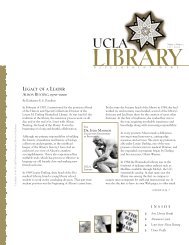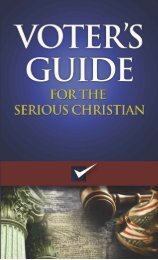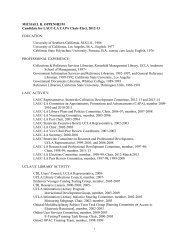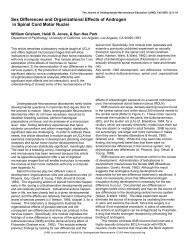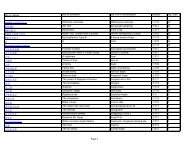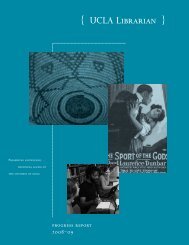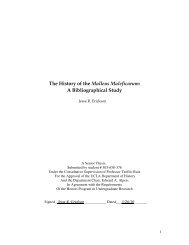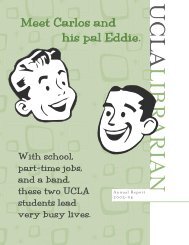Research Paper - UCLA Library
Research Paper - UCLA Library
Research Paper - UCLA Library
You also want an ePaper? Increase the reach of your titles
YUMPU automatically turns print PDFs into web optimized ePapers that Google loves.
Gu 29<br />
Henry VIII is a fictional imagining of the title king’s personal conflicts up until the birth<br />
of the princess Elizabeth. His divorce of Katherine of Aragon and subsequent marriage with<br />
Anne Boleyn, Elizabeth’s mother, culminate in the birth and christening of the baby Elizabeth.<br />
By concluding the play with the future queen’s christening, Shakespeare and Fletcher focus on<br />
the glory of the virgin queen’s rule rather than the accomplishments of Henry VIII. In Cranmer,<br />
Duke of Norfolk’s prophetic speech in Act V, scene 4, he proclaims that the child “now<br />
promises/ Upon this land a thousand thousand blessings,/ Which time shall bring to ripeness”<br />
(V.4.18-20). The laudatory message is hardly subtle here. Through Cranmer’s prophetic<br />
foreshadowing, the audience is asked to look back on the Elizabethan era and remember (or<br />
reimagine) the legacy of the deceased queen. With elements more similar to Shakespeare’s late<br />
romances than his other history plays with hints of Fletcherian tragicomedy, Henry VIII seems to<br />
offer a romantic reworking of Tudor history. However, to assume that Henry VIII is simply a<br />
piece of dramatic propaganda, glorifying the previous monarch, is to ignore the fact that the<br />
history play was written during James’s reign. Ironically the play is also named All is True; the<br />
secondary title suggests Shakespeare and Fletcher’s version of history as a truer account – one<br />
that stands to the advantage of King James I, the patron of their play company.<br />
While the speech centers on Elizabeth’s wisdom and virtue, nods towards James I pepper<br />
the monologue. Cranmer continues on, noting that the queen will serve as “a pattern to all<br />
princes living with her/ And all that shall succeed” (V.4.24-25). The mention of “princes” draws<br />
attention to Elizabeth’s primary distinctive feature as a monarch: her gender. Historically, Henry<br />
VIII is known to have divorced his first wife in large part because she was unable to produce a<br />
male heir. In fact, when the historical Elizabeth was born, all the banners celebrating her birth<br />
had declared the birth of a prince; only after the mistake was discovered did the court rush to add



